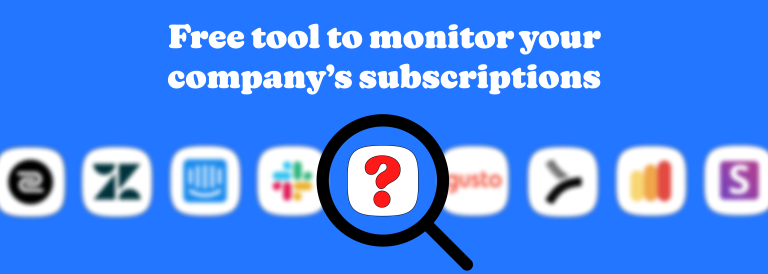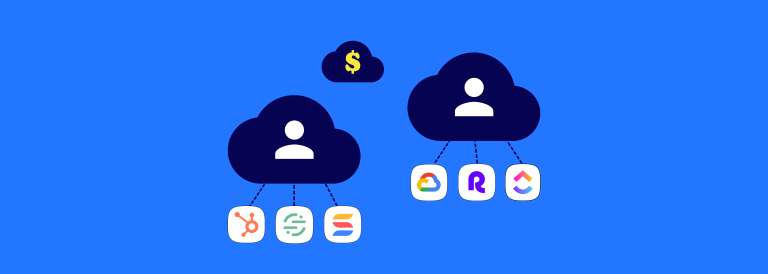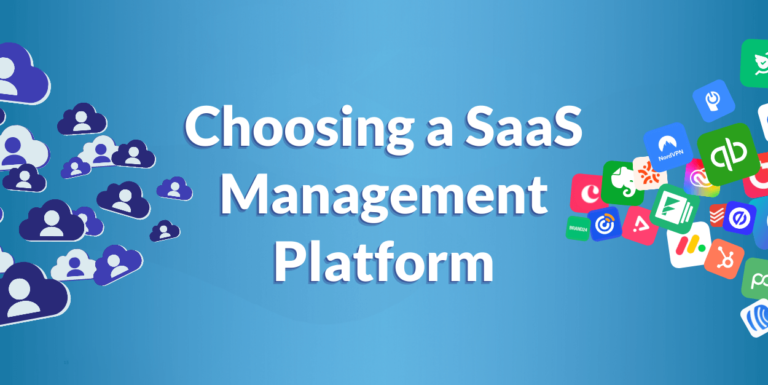SaaS Vendor Management: Best Practices
What’s ahead
As cloud-based software products become more popular, they will also become more abundant. With that abundance comes both the burden and opportunity of choice. Each SaaS product will come at a different cost, contract, and value. With more on the market, SaaS providers and vendor management tools like NachoNacho have become a crucial segment of the larger IT asset management field.
Why? Because SaaS vendor management is different from managing on-premise software. Instead of a one-and-done purchase, it requires upkeep, license management and renewals, and a certain level of collaboration from a trustworthy vendor.
While these SaaS applicaitons simplify business operations in many ways, they can complicate them in others. This guide will cover all that you need to know about SaaS vendor management – what it is, why it matters, and the best practices for applying it.
What is SaaS Vendor Management?
You may already be familiar with the term “vendor management”. SaaS vendor management, however, is relatively new given the rising popularity of software-as-a-service.
While the traditional school of thought on managing vendors concerns finding the best vendors that offer the right service or solution, negotiating the best contract, and mitigating risk, SaaS vendor management includes those factors plus long-term goals such as creating relationships with your SaaS vendors for greater leverage in the renewal process.
SaaS vendor management involves searching for the most apt solutions to fix a business problem and then being able to seamlessly roll out that solution across an organization. It also means building strategic relationships with vendors, managing your application usage, and optimizing spend while understanding your value reports.
Your SaaS vendor manager will be responsible for selecting vendors, negotiating prices, vendor onboarding, invoicing and payments, and more, which will contribute to the productivity and organization of your company as it relates to your cloud-provided services.
In this way, selecting the proper vendor can have a huge impact on business. Next, we’ll highlight some of the reasons that choosing the right SaaS vendors will help your business run smoothly.
5 Reasons You Need SaaS Vendor Management
Recent studies suggest that by the end of 2021, 73% of organizations employed cloud SaaS for their daily operations. This statistic alone is an argument for using SaaS platforms for your business, but why is vendor management so crucial?
When you don’t approach SaaS in a methodical manner – i.e., following the process of choosing, implementing, managing, and eventually renewing or replacing you SaaS – disorganization and chaos can take over. This is what we call “SaaS Sprawl”.
When companies don’t have an automated and centralized manner of tracking usage, spending, or other important data points related to software, they run the risk of overspending or inefficient use of time and resources.
SaaS vendor management ensures that you are using the best and safest applications for your company without overspending. Below are 5 reasons your business should use SaaS vendor management.
1. Greater Visibility
Increased digital literacy makes it so even employees not trained in IT can be comfortable finding SaaS solutions that fit their business needs. It is almost too easy for employees to go off and purchase their own subscriptions. Without any centralized vendor management process, businesses can find that they quickly build up costs that nobody is managing, leading to a lack of visibility into spending.
A solution lies in utilizing a cloud and SaaS management and discovery marketplace like NachoNacho. There you can find all of the SaaS subscriptions your company may need in one place and manage those subscriptions with greater ease, more control, and less ambiguity.
Using a SaaS vendor ensures that your applications are well-managed and increases visibility on what employees are purchasing. The software allows you to manage employee expenses, licenses, and other upcoming business costs. With insights like these, you can make informed decisions on what apps to keep or what has become redundant to optimize functionality.
2. Manage Security Risks
With an increase in shadow IT comes an increase in SaaS security risks. By signing up for an application, employees are required to share their work email and as a result share the company’s (sometimes sensitive) information online. It is important to pick a trustworthy vendor to protect that information and avoid phishing and DDoS attacks.
With strong vendor management, you have an excellent vantage point to monitor all of your applications from a single position and understand who makes the most purchases, what those purchases are, and whether or not they are increasing productivity. Additionally, it gives you the opportunity to train employees on risk mitigation tactics and therefore increase SaaS security.
3. Improve Return on SaaS Stack
Many businesses that use SaaS across departments understand the headache of SaaS overspending. If your business purchases SaaS apps from multiple vendors, it’s likely that you’ll acquire tools with similar features and end up spending more for less.
Vendor management platforms ensure that you won’t overlap on functionality and can consolidate tools to save money. They also allow you to analyze annual SaaS spending and therefore maximize the value you will get out of your cloud-based services.
You can greatly improve the return on your SaaS stack by getting your SaaS subscriptions at up to 30% off in the NachoNacho marketplace.
4. Effective Application Efficiency
Although SaaS applications come with plenty of advantages, there are downsides. As your business acquires more SaaS subscriptions, organizational and IT infrastructure tend to suffer. SaaS vendor management eases this burden by saving you time and cutting out unnecessary spending via the consolidation of applications.
For example, let’s say your business needs three different SaaS applications:
- FreeAgent for collaboration.
- Engagebay for customer support.
- Cloudtalk for sales and lead generation.
A SaaS marketplace and vendor management tool like NachoNacho would both simplify the application purchasing process and centralize those subscriptions in one place.
With vendor management software onboard your business, you can maximize the productivity of your existing SaaS suite as well as decrease the load on your IT department, all to further the goal of improving efficiency, simplicity, and nixing unnecessary spending.
5. Strategic Vendor Renewals
Many SaaS providers will not notify you in time to catch the negotiation window before a renewal. In other words, they use auto renewals to jack up their prices too quickly for you to do anything about it!
A solid SaaS management tool will notify you of any updates, changes, or renewals to an application. You can decide, after considering your specific business needs, whether or not you use the app enough to renew. After using it for a period of time and understanding the associated costs versus enterprise benefits, you can assess whether it continues to fit into your budget.
Understanding when a subscription renewal occurs doesn’t take too much brain-power with a bit of help. With tools like renewal calendars that send out reminders, vendor management software offers the simplicity of staying on top of renewals, instead of being taken off guard when a renewal date comes around.
SaaS Vendor Management Best Practices
Now that you understand why SaaS vendor management is a crucial aspect of any business’ IT management, let’s check out some best practices for utilizing your own SaaS vendor management system.
Keep Track of Licenses and Renewals
With auto-renewal turned on, you could be charged without notice. It is best to manage all of your licenses and renewables via a single platform to be sure you aren’t missing anything. Luckily, most SaaS vendor management platforms provide tools to notify you in plenty of time!
Because almost any employee can procure a SaaS application, it is important to keep track of renewals and licenses for spending analysis across business units, teams, and individuals. Keeping an inventory of company and vendor details is easy with a SaaS vendor management tool and will enable you to quickly retrieve information concerning a specific software as well as promote accountability amongst employees.
Ownerships
Keeping track of SaaS apps alone is seemingly impossible with decentralized purchasing. Using a SaaS vendor management system helps mitigate this issue. It is then up to you to decide who is the best fit to claim ownership of certain SaaS apps from a company standpoint – it could be yourself, a department head, or another specific individual.
Having ownership consistency is vital to vendor and SaaS management. It will streamline the process and save time next time you are ready to negotiate a renewal.
Track Usage and Audit for Efficiency
Tracking SaaS usage within your enterprise provides crucial insight into the effectiveness of your current cloud-based applications. By tracking app activity, you can better determine the level of value it is bringing to your company – or the unnecessary costs it is creating.
IT leaders should perform an audit every six months and examine metrics such as the daily usage of applications, whether or not they have become redundant, and if there are any free tools that could replace current paid ones. Understanding what licenses you do or do not need will give you an advantage in vendor negotiations and optimize SaaS spending.
SaaS vendor management platforms like NachoNacho are an important part of SaaS governance. The process of choosing, implementing, and eventually renewing or replacing SaaS is an investment that requires a level of attention for success.
But like any well-supported investment, proper research will result in a proper reward! Leveraging a SaaS vendor management system at your company will allow you to stay up-to-date with your SaaS subscriptions and foster workflow improvement and organizational efficiency.







